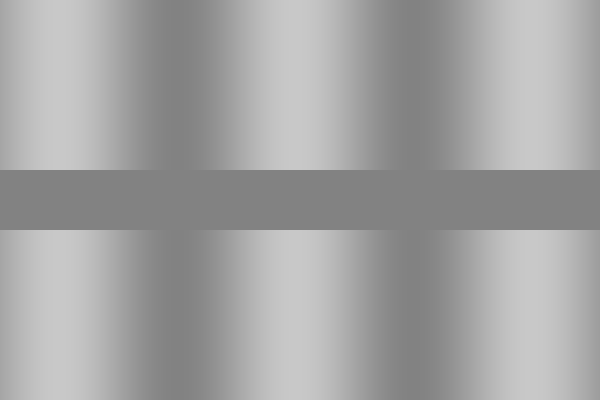
There are two dark phantoms across the dark occluder, each of them appears to expand horizontally.
A new anomalous motion illusion: the "central drift illusion"
Akiyoshi Kitaoka (Ritsumeikan University) and Hiroshi Ashida (Kyoto University)
Presented in the 2004's winter meeting of the Vision Society of Japan, Tokyo, Japan (January 26 - 28, 2004)
Presented January 26, 2004, using this page
Summary. We found a new anomalous motion illusion, in which observers see illusory motion in a stationary image. Although a variety of anomalous motion illusions have recently been discovered, most of them require retinal slips of images to generate the illusory motion. Among them, the only exception was the peripheral drift illusion, in which observers see illusory motion in the peripheral vision without any retinal slip (Kitaoka and Ashida, 2003, VISION). The present new illusion appears without retinal slips of images and can be seen in the central vision as well as in the peripheral vision. The critical factor to cause this illusion seems to be the difference in contrast between the inner and outer areas of elongated bars or ellipses.
We found a new anomalous motion illusion in the figures of visual phantoms, in which phantoms appear to expand in the horizontal direction when we observe them carefully. But the effect is too faint for most observers.

There are two dark phantoms across the dark occluder, each of them appears
to expand horizontally.
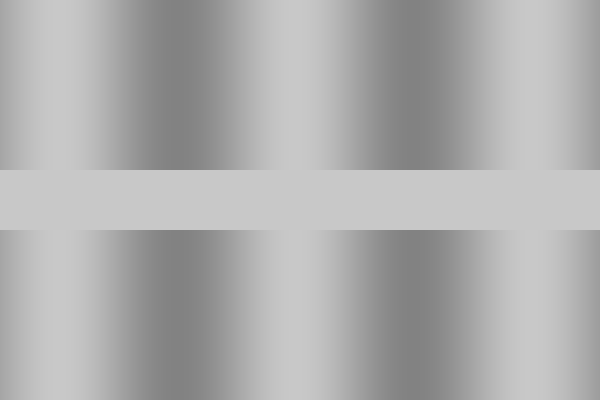
There are three light phantoms across the light occluder, each of them
appears to expand horizontally.
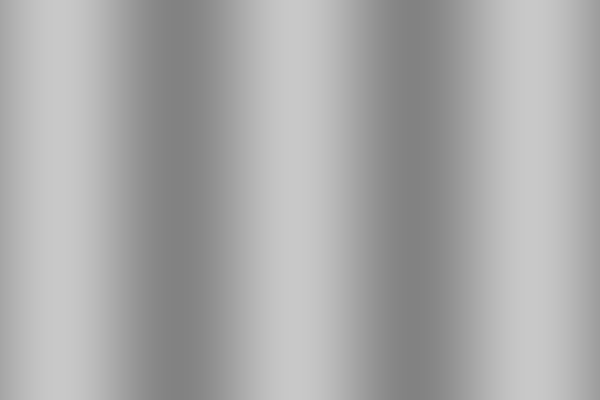
The sinusoidal grating itself does not show any phantoms or any anomalous
motion illusion.
A special type of visual phantoms (pseudo second-order phantoms) strongly induces this new illusory motion, in which phantoms bridging low-contrast stripes appear to expand in the horizontal direction.
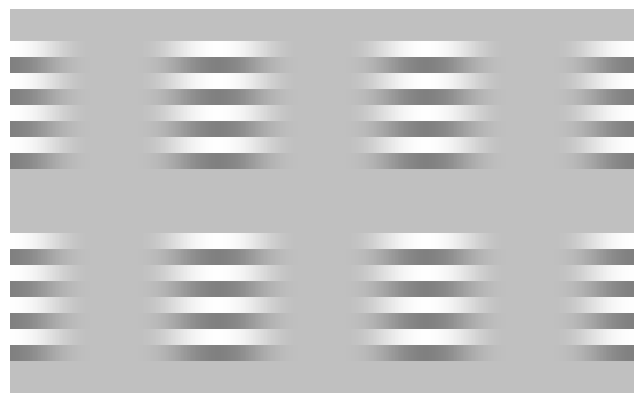
Actually, the low-contrast areas in the stripes appear to expand. Subsequently, phantoms that are induced by them appear to expand.
One of Zavagno's figures also shows this type of anomalous motion illusion, in which the outer "misty" darkness appears to move into the inner space. The effect is rather small.
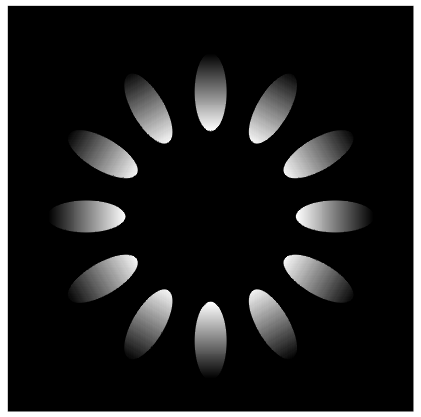
Some observers may see the reverse effect just after saccades or blinks, probably due to the difference in visual latency depending on luminance.
When contrast of the Zavagno figure decreases, the anomalous motion illusion increases. The outer "mist" appears to move into the inner space (left) . The inner "mist" appears to expand (right) .

When the ellipses are rotated through 90 deg, the rings made up of the ellipses appear to rotate slowly. The ring appears to rotate clockwise (left). The ring appears to rotate counterclockwise (right).
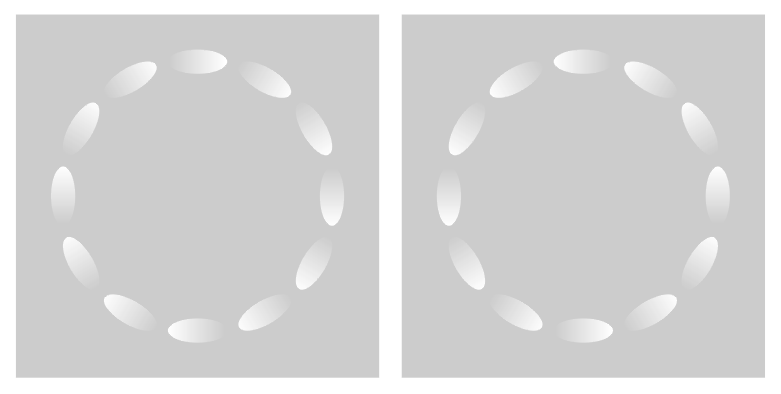
The shape shown below (round heads and rectangular tails) generate stronger illusion than the ellipse version. The ring appears to rotate clockwise (left). The ring appears to rotate counterclockwise (right). Also see "Boats".

This illusion does not depend on the luminance gradient of inducers. Although the luminance gradients are the same (white to gray) between the two figures shown below, the direction of illusory motion is opposite to each other. The upper two rows in the left figure appear to move leftward while those in the right figure appear to slide rightward; the lower two rows in the left figure appear to move rightward while those in the right figure appear to slide leftward.

The only difference in stimuli is whether the background is gray or white. It is therefore suggested that the critical factor to generate this illusion be contrast. In this case, the direction of illusory motion can be described as "low-to-high contrast".
The difference in color does not disturb this illusion as long as the luminance order is maintained. In the figure shown below, the first, fourth, fifth and eighth rows appear to move leftward while the rest appear to slide rightward.
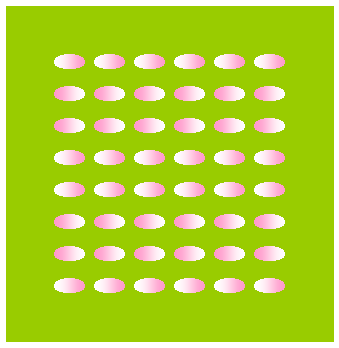
The green and the pink should be of the same luminance or the former should be darker than the latter. This demonsrtation was not good in the VSJ meeting because the green of the projecter was much brighter than the pink.
There is another subtype of this illusion as shown below. Each square made up of horizontal stripes appears to expand in the horizontal direction. In this case, the direction of illusory motion can be described as "high-to-low contrast". The figures of this subtype are characterized by luminance edges, not luminance gradients.
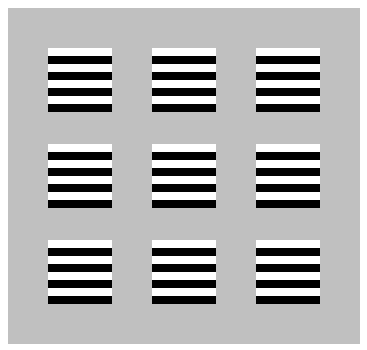
This demonsrtation was not supported by many people in the VSJ meeting. Do you see this illusion?
A demonstration of the illusory motion made up of an ensemble of the two subtypes. The upper and lower rows appear to move leftward, while the middle one appears to slide rightward.
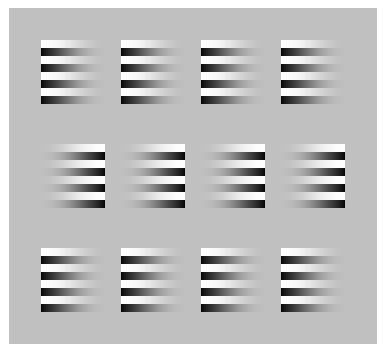
Anyway, this new class of anomalous motion illusion is characterized by illusory motion that doe not require any retinal slip of images, which is quite different from the characteristic of the Ouchi illusion or other related illusions because they need retinal slips of images.
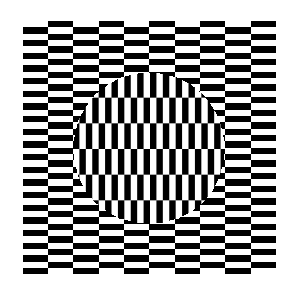
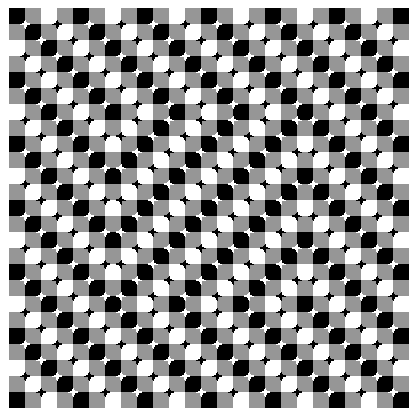
The Ouchi illusion and a "swamp" illusion
This special characteristic is common to that shown in the peripheral drift illusion (Kitaoka and Ashida, 2003, VISION), which, however, cannot be seen in the central vision. Therefore, we would like to propose to call the present new illusion the "central drift illusion".
For applied works of the central drift illusion, see "Sakura" or "Hearts and tears".
For applied works of the peripheral drift illusion, see "Rotating snakes" or "Advance".
Other notes
1. The central drift illusion seems to start with some delay after the change of gaze.
2. The central drift illusion is strong when the luminance gradient is drawn along the longer axis of inducers while the peripheral drift illusion is strong when the gradient is along the shorter axis, e.g. "Eggs".
3. We will soon propose a model to explain the mechanism of the central drift illusion.
cf.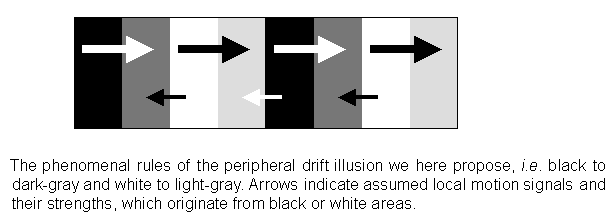
Appendix
Apparent positional shifts are induced by the central drift illusion. Although the upper and lower ellipses are aligned vertically, the former appears to shift rightward as compared with the latter.
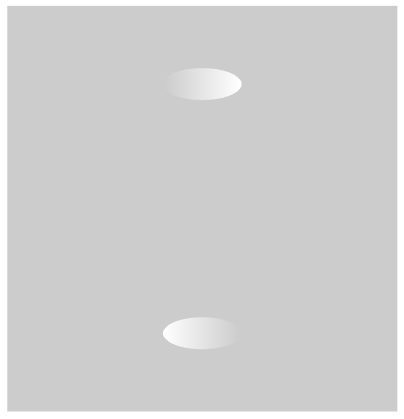
***
Although each pair of the upper and lower ellipses is aligned vertically, the upper row appears to shift inward as compared with the lower one.
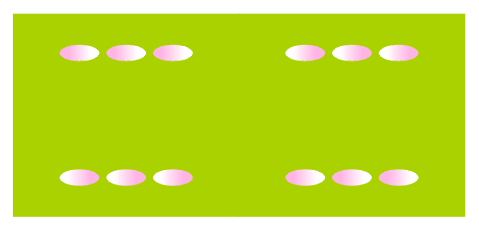
We will soon submit a manuscript involving this issue to an academic journal.